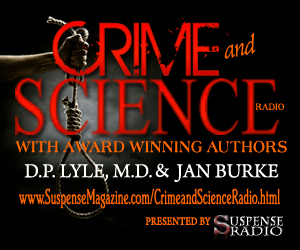Join DP Lyle and Jan Burke as they welcome Dr. Cyril Wecht, internationally renowned forensics pathologist Dr. Cyril Wecht as we discuss his life in criminal justice and the numerous famous cases he has been involved with over his stellar career.
BIO: Dr. Cyril Wecht holds degrees in both medicine and law, receiving his MD degree from the University of Pittsburgh and his law degree from the University of Maryland. He holds professorships at the University of Pittsburgh and Duquesne University School of Law. He has published nearly 600 scientific articles, is on the editorial board of more that 20 medical-legal and forensic scientific publications, and had published several books on forensic science. His list of famous cases is a who’s who in medical-legal investigation.
LINKS:
Dr. Wecht’s Website: http://www.cyrilwecht.com
Dr. Wecht’s books and videos: http://www.cyrilwecht.com/books.php
50 Years Later, Wecht Continues To Poke Holes in Report on JFK Assassination: http://triblive.com/news/allegheny/5017529-74/wecht-commission-specter#axzz2tuBTchS1
Dr. Cyril Wecht Believes Killers of JFK, RFK, MLK Had Help: http://www.vindy.com/news/2013/may/01/renowned-pathologist-makes-a-case-for-co/
Dr. Cyril Wecht Lectures on the JFK Assassination: https://www.youtube.com/watch?v=-muQL-QPKeM
Dr. Cyril Wecht on JFK Assassination: Let’s Uncover the Truth: https://www.youtube.com/watch?v=YtUL-BpZAu8
Crime Library: JonBenet: From Impressions To Book by Dr. Katherine Ramsland: http://www.crimelibrary.com/criminal_mind/forensics/cyril_wecht/6.html
Dr. Cyril Wecht Discusses Forensic Challenges of Cold Cases: http://www.wtae.com/news/local/allegheny/Dr-Cyril-Wecht-discusses-forensic-challenges-of-cold-cases/19648550
Dr. Cyril Wecht: The Benefits of Forensic Credentialing: http://www.pbs.org/wgbh/pages/frontline/criminal-justice/real-csi/dr-cyril-wecht-the-benefits-of-forensic-credentialing/
Cyril H. Wecht: What I Know: http://www.pittsburghquarterly.com/index.php/What-Do-I-Know/what-do-i-know-with-cyril-h-wecht.html
Dr. Cyril H. Wecht: Pittsburgh’s Polymath: http://www.popularpittsburgh.com/pittsburgh-info/pittsburgh-history/famous-pittsburghers/dr-cyril-wecht.aspx




































